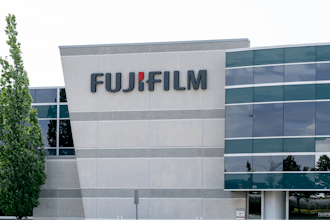FDA, USDA, Cornell University announce alliance for produce safety
For Immediate Release: Nov 4, 2010
Media Inquiries: Doug Karas, 301-796-2805, [email protected]
Consumer Inquiries: 888-INFO-FDA
FDA, USDA, Cornell University announce alliance for produce safety
Aim is to help produce growers, packers access food safety educational materials
A public-private organization will provide produce growers and packagers with fundamental, on-farm food safety knowledge, in advance of a proposed produce safety regulation, the U.S. Food and Drug Administration, the U.S. Department of Agriculture’s Agricultural Marketing Service (USDA/AMS), and Cornell University announced today.
The new Produce Safety Alliance is a three-year, $1.15 million partnership funded by the FDA and USDA. It will be housed at Cornell University through a grant from AMS. Cornell’s national Good Agricultural Practices (GAPs) program has been a leader in the development of materials on GAPs and in its dissemination of food safety knowledge to the agricultural community.
Key elements of the alliance’s work include:
• Developing a standardized, but multi-formatted and multi-lingual education program on GAPs and co-management;
• Creating an information bank of up-to-date scientific and technical information related to on-farm and packinghouse produce safety, environmental co-management, and eventually the FDA’s proposed produce safety rule;
• Launching a website to make the alliance’s work and information readily accessible;
• Establishing a network of educational collaborators;
• Conducting an assessment of existing educational outreach tools to identify knowledge gaps and to provide for continuous updating;
• Working with partners on the steering committee and others to develop and deliver train-the-trainer materials and sessions.
In 2011, the FDA is expected to issue a proposed rule on the safe production, harvesting, and packing of produce. The alliance is aimed at giving produce growers and packers training and educational materials and opportunities to learn about current risk-and science-based best food safety practices, and future regulatory requirements.
“As we traveled around the country listening to growers and packers and soliciting their comments even before we propose a produce safety rule, we have committed ourselves to just this kind of collaborative effort,” said FDA Deputy Commissioner for Foods Michael R. Taylor. “We also know that small growers and packers are especially interested in the kind of hands-on training and support envisioned by the alliance.”
The alliance will have representatives from the Association of Food and Drug Officials (AFDO), the National Association of State Departments of Agriculture (NASDA), land grant universities, growers and shippers, produce trade organizations, and the USDA’s Natural Resources Conservation Service, joining FDA, AMS, and Cornell officials on the alliance’s steering committee.
“The alliance is another sign of our commitment to working with growers and packers and our federal partners at FDA to make certain that our marketplace is economically strong and provides American families the safe, fresh produce they need for healthy diets,” said Ann Wright, Deputy Under Secretary, Marketing and Regulatory Programs, USDA.
“In our 12-plus years of working with growers and packers on how best to implement GAPs, we have seen how much they want to do the right thing and meet the industry demand for food safety,” said Betsy Bihn, coordinator of Cornell University's National GAPs Program. “What growers and packers want is science-based information they can use in the fields and the packing houses to improve food safety practices in practical ways. Our goal is to meet that need today and down the road as FDA moves forward in its rulemaking process.”
Taylor and Wright noted that voluntary and contractual produce safety standards already are in use by many producers nationwide and said that the alliance will take those into account in developing its materials. The work of the alliance also will be based on the co-management approach of integrating food safety and environmental protection efforts, they said.
“This effort builds on the collaborative effort we have led over the past three years to develop a model produce safety code for our members,” said AFDO President Ron Klein. “We welcome an opportunity to share what we have learned and move forward everyone’s goal of ensuring the safety of fresh fruits and vegetables.”
“Whether they are large, small, or somewhere in between, what our farmers want and need is hands-on practical information, and we see the Produce Safety Alliance as a vital way to develop that information and deliver it in a timely and effective way,” said North Carolina Commissioner of Agriculture Steve Troxler, chair of NASDA’s Food Safety Committee.
The FDA and USDA will issue updates on the progress and activities of the Produce Safety Alliance in the coming months.
For more information:
• FDA Web page: Fruits, Vegetables & Juices
• FDA Web page: Produce Safety Information
#
SOURCE






















